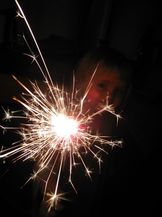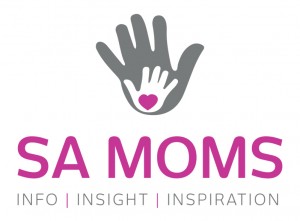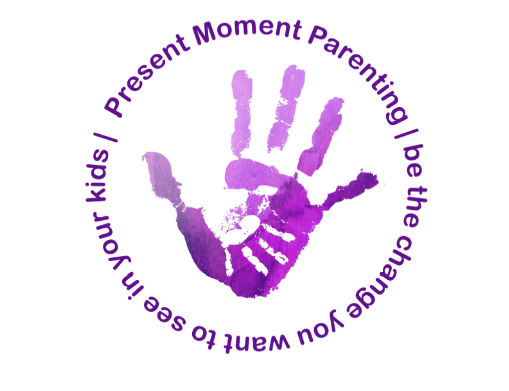
Did you know that feelings are real things? We always think of them as these ethereal non-physical thought forms, but every feeling creates an actual chemical and hormonal change in your body – a real physical event inside you.
And every feeling that is repressed creates an actual physical blockage in your body. Feelings that are not dealt with, that are not faced and learned from, become stored in the body to be dealt with at a later stage. And if never dealt with…? Well, this is the root cause of most of the dis-eases that we face today, from the common cold to cancer.
This is why I always encourage parents to allow their children to express their emotions and assist them in working through them.
And every feeling that is repressed creates an actual physical blockage in your body. Feelings that are not dealt with, that are not faced and learned from, become stored in the body to be dealt with at a later stage. And if never dealt with…? Well, this is the root cause of most of the dis-eases that we face today, from the common cold to cancer.
This is why I always encourage parents to allow their children to express their emotions and assist them in working through them.
The most common mistake looks something like this: A child calls you in the night and says “I’m scared” and your automatic response is “Don’t be scared, there’s nothing to be scared of, everything is fine”. What’s happened here is that the child has had a very real feeling that has been automatically negated by the parent – in other words you tell them to pretend not to have a feeling that they’re already having; that it is not ok to have this feeling; that it should be repressed not felt.
So what is the correct response? The first thing we need to do is to acknowledge the child’s feeling – give it a name - saying something like, “Wow, I can see that you’re really terrified right now – you’re even shaking” (or whatever similar response would be appropriate based on their level of fear). The child then immediately sees that you care and that you can recognise a feeling without being afraid to face it yourself. You acknowlege what is ALREADY HAPPENING instead of resisting the present moment and the gifts and lessons that it brings.
From there, work through it with your child. Find out what it is that’s scaring them. Allow them to brainstorm with you as to possible solutions that would make them feel safer. Grab a pen and paper and write down their ideas (all of them, whether realistic or not), add some of your own, and then pick a few of the best ones and implement them. You’ll be surprised at the solutions that even a very small child can come up with when allowed to participate; and if they’ve come up with their own ideas they’re more likely to work for them.
Now I realise that in the middle of the night this might seem like insanity, but it can always be done the next morning! However, by acknowledging the child’s feeling in the first place they are likely to calm down much quicker than if you simply try to brush off the emotion. And the added bonus is that both you and they learn from the experience and you prevent them from a lifetime of living with unresolved negative emotions building up in their bodies.
Remember to do this for yourself too – if you’re feeling a negative emotion, ask yourself how you might have created it and what you can learn. Acknowledge the feeling, learn from it, and live a healthy life.
If you have unresolved emotions or the resulting physical blockages and you don’t know how to move on from them now, give me a call – my Personal Breakthrough Experience is designed to resolve all negative baggage and get you back onto your natural path of healthy feelings and healthy bodies!
Be the change you want to see in your kids.
So what is the correct response? The first thing we need to do is to acknowledge the child’s feeling – give it a name - saying something like, “Wow, I can see that you’re really terrified right now – you’re even shaking” (or whatever similar response would be appropriate based on their level of fear). The child then immediately sees that you care and that you can recognise a feeling without being afraid to face it yourself. You acknowlege what is ALREADY HAPPENING instead of resisting the present moment and the gifts and lessons that it brings.
From there, work through it with your child. Find out what it is that’s scaring them. Allow them to brainstorm with you as to possible solutions that would make them feel safer. Grab a pen and paper and write down their ideas (all of them, whether realistic or not), add some of your own, and then pick a few of the best ones and implement them. You’ll be surprised at the solutions that even a very small child can come up with when allowed to participate; and if they’ve come up with their own ideas they’re more likely to work for them.
Now I realise that in the middle of the night this might seem like insanity, but it can always be done the next morning! However, by acknowledging the child’s feeling in the first place they are likely to calm down much quicker than if you simply try to brush off the emotion. And the added bonus is that both you and they learn from the experience and you prevent them from a lifetime of living with unresolved negative emotions building up in their bodies.
Remember to do this for yourself too – if you’re feeling a negative emotion, ask yourself how you might have created it and what you can learn. Acknowledge the feeling, learn from it, and live a healthy life.
If you have unresolved emotions or the resulting physical blockages and you don’t know how to move on from them now, give me a call – my Personal Breakthrough Experience is designed to resolve all negative baggage and get you back onto your natural path of healthy feelings and healthy bodies!
Be the change you want to see in your kids.







 RSS Feed
RSS Feed